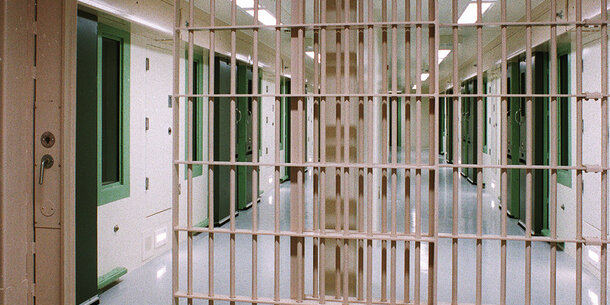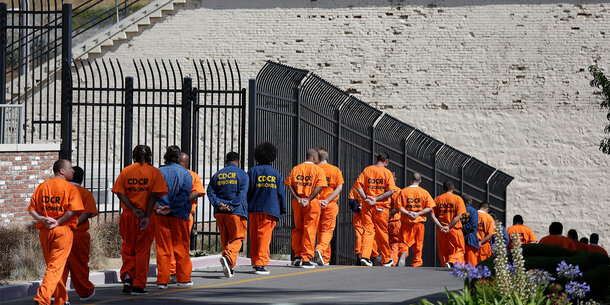For the first time since its founding over 400 years ago, New York City soon won’t run its own jails. Instead, a federal judge will.
In May, after finding the city in civil contempt of several court orders to stem excessive force and violence, Chief U.S. District Judge Laura Taylor Swain temporarily stripped the city’s authority over its jail system, which includes the sprawling Rikers Island complex. The judge later this year is set to appoint an independent, outside official to bring the beleaguered institution into legal compliance. Swain calls the court appointee a remediation manager, but practically speaking, they’ll be a correctional receiver — someone whom a court temporarily empowers to remediate acute and persistent legal violations within a jail, prison or juvenile detention center or some part of it.
Answerable to the judge alone, the manager will boast broad authority to shape jail operations. They’ll focus on aspects that’ve proved most resistant to change — chief among them, staffing and security practices. But that authority won’t be unbounded: Swain will require the manager to work hand in glove with the jail system’s commissioner, the city correction department’s leader, to improve conditions.
That collaboration could encourage enduring change to the jails.
Imagine a receiver manages to enhance a jail’s medical care services without the government’s input. In so doing, the receiver chooses only high-dollar reforms. When the government reassumes control, it abandons the jail’s upgraded care. The reason? The receiver’s reforms, while effective, are too expensive to sustain.
Was this receivership successful? Yes and no. True, it improved conditions, the goal of every correctional receivership. But at what cost? If the government can’t plausibly maintain a receiver’s gains, the mechanism defeats itself, perpetuating a vicious cycle of backsliding, neglect, and litigation. That the city over the past decade has paid over $593 million to settle claims against the jails confirms the point.
The commissioner can help the manager identify lasting, pioneering changes, navigate thorny political thickets, and focus on institutional functions outside the manager’s remit. Of course, after the case ends, Judge Swain will have no way of guaranteeing the city’s commitment to any of the manager’s advancements; but she can and already has taken steps to make that prospect more likely.
Since 1979, judges have taken temporary control of jail, prison, and juvenile detention operations from state and local authorities through receivership just 14 times. There are three active correctional receiverships — two for California’s prison medical and psychiatric care systems and one for the Hinds County Jail serving Jackson, Mississippi. In addition, Arizona‘s prison medical care system and the Los Angeles County Juvenile Halls are both facing calls for receivers in federal and state courts, respectively.
Swain’s decision to seize the jails comes nearly a decade after they fell under federal court oversight as part of the settlement in Nunez v. City of New York, a class-action lawsuit. Bypassing trial, the city agreed to implement a spate of court-enforceable reforms to reduce excessive use of force and violence. Yet in virtually every relevant respect over these past years, Swain recently observed: No “interventions [have been] sufficient to push the [Department of Correction] toward compliance.”
And that failure has turned into real tragedy. Since the Nunez settlement took effect, 112 people have died in the city jails or shortly after their release. That count includes this year’s nine deaths, which is nearly double the number of detainees who died in all of 2024. And many of these deaths — like that of Michael Nieves, who sliced his throat with a razor and bled to death as jail staff watched — were preventable.
Still worse, the Rikers population is steadily rising, and that by itself makes it harder to run a decent correctional institution. Today, there are more than 7,400 people in the New York City jails, up nearly twofold since a low of under 4,000 in 2020. The inhumane conditions at Rikers further stun given the annual cost of $500,000 to detain just one person, which is many times more than the average in other large U.S. jails.
Enacted in 2019, a local law mandates the city to shutter and replace Rikers with four smaller jails situated in each of the boroughs except Staten Island. This “Rikers Closing Plan” would alleviate some of the jails’ problems. The law set an August 2027 deadline, but because of construction delays, political tension, and ballooning costs, the plan is off track. Some estimates put the completion of construction closer to around 2032.
So, what’s next?
People seeking to be the remediation manager have applied, and the lawsuit’s parties — the Legal Aid Society and federal prosecutors for the plaintiffs, the city as the defendant — are supposed to be evaluating applications. By the end of August, the parties may recommend up to four manager candidates for Swain’s ultimate consideration. Yet as the selection process unfolds, the city is also urging Swain to modify her decision appointing a manager. Evidence, it argues, fails to demonstrate the absolute necessity of the move, which is legally required of Swain. The Legal Aid Society disagrees.
Depending on how Swain handles its request, the city has already indicated it might ask the federal appeals court to review the manager’s appointment, which could delay, alter, or invalidate it. But even if the current mayoral administration does appeal, there’s a flipside possibility: New Yorkers this fall could elect a new mayor who, upon taking office, could withdraw a petition before the appeals court rules therefore clearing the way for the manager’s work to proceed.
Chances are, Swain doesn’t even want to be at the helm of Rikers Island. That’s because running jails isn’t a court’s job — it’s the government’s job. But if the government fails, courts must eliminate the ensuing constitutional violations and uphold the rule of law. And if those violations refuse to go away, a court’s job may include “intrusion into the realm of [jail and] prison administration” and “appointment of . . . receivers.” So when it regains control of its jail system, which will hopefully be less troubled, the city must sustain respect for the inherent dignity of all people who work and live in them.



